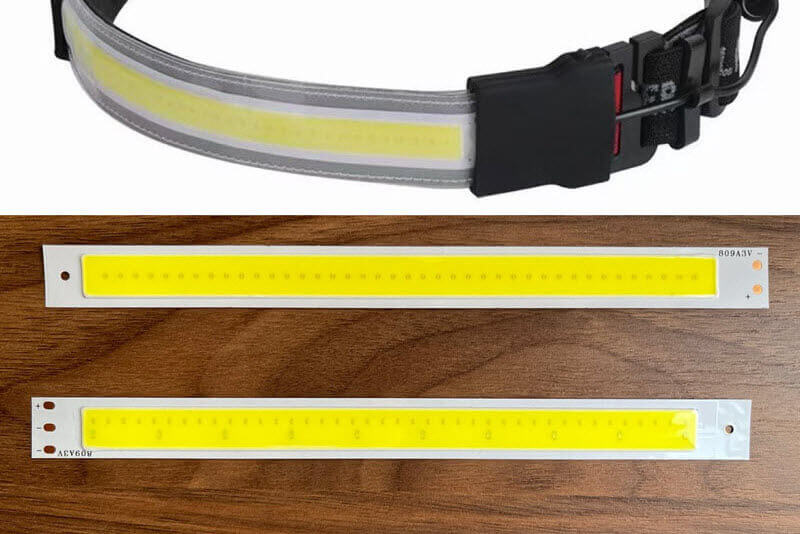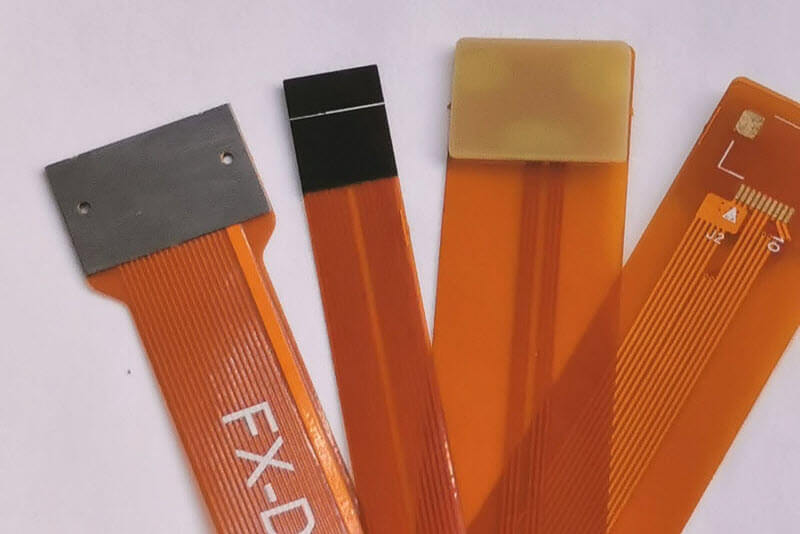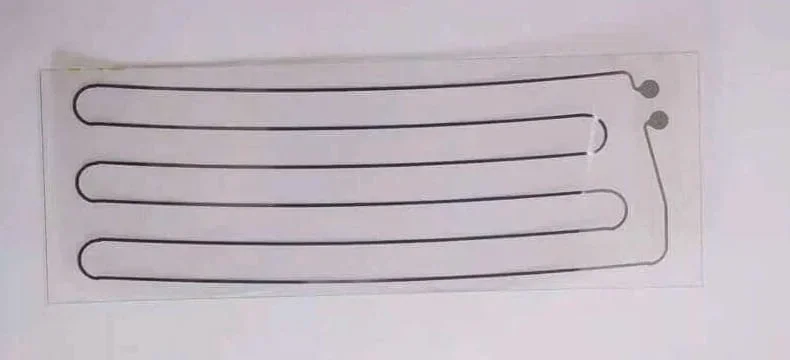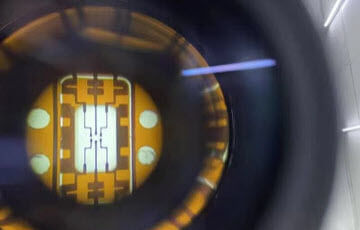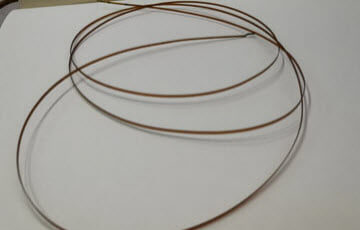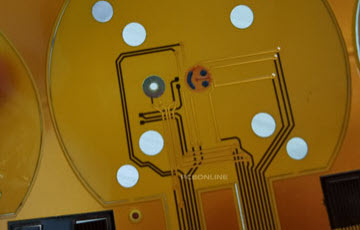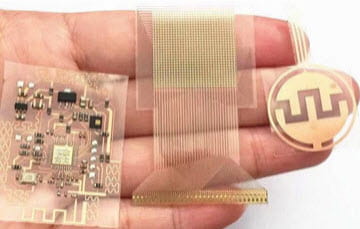Advantages of the PCB Manufacturer PCBONLINE
 MATERIALS
MATERIALS PCBONLINE uses high-quality materials like Dupont, TaiFlex, and Kapton for flexible PCB manufacturing, and PCB stiffeners PI, FR4, and stainless steel are available.
 EQUIPMENT
EQUIPMENT The flexible PCB manufacturer PCBONLINE has complete equipment for flexible PCB manufacturing, including FCCL, etching, laser and mechanical drilling, surface finish, etc.
 TEAM
TEAM The professionals from PCBONLINE have solid expertise and experience in flexible PCB fabrication and assembly and make sure the signal integrity of the flexible PCBs.
 QUALITY
QUALITY The flexible printed circuit boards from PCBONLIE have good stretch resistance, thermal and salt spray withstand, and the quality level is medical-grade.
 CUSTOM
CUSTOM PCBONLINE provides custom flexible PCB, including 1 to 10-layer flex PCB, single-sided flex PCB, souble-side flex PCB, rigid-flex PCB, and clear flexible PCB.
 TRANSPORT
TRANSPORT PCBONLINE provides various flexible PCB shipping methods, including air, sea, and rail shipping by DHL, FedEx, and UPS. You can choose your freight forwarder.
What is Flexible PCB
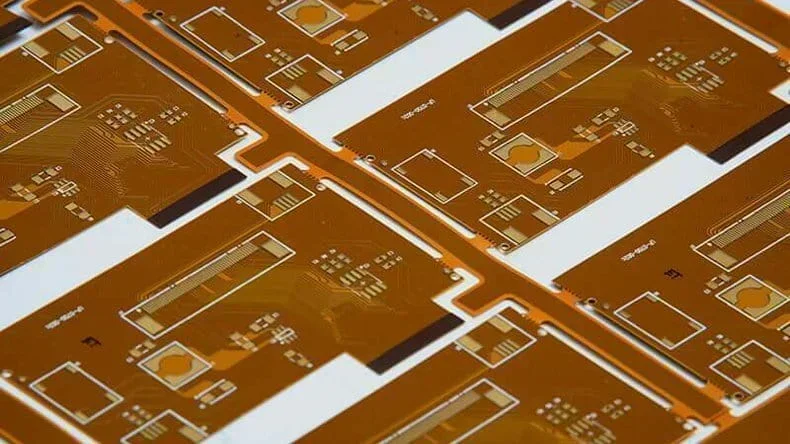
The flexible printed circuit board is shortened to flexible PCB, flex PCB, or FPC (flexible printed circuit). It is a thin, light, and bendable PCB made from FCCL (flex copper-clad laminate) and flexible PCB materials PI (polyimide) or PET (polyester).
A flexible PCB consists of layers, including:
Substrate: the PI and PET sheet materials that provide the base of the flex PCB. Its color determines the color of the FPC, including yellow, white, black, and transparent.Copper: a conductive layer housing the circuit traces. Flex PCBs frequently bending use RA (rolled-annealed) copper; flex PCBs in static state use ED (electrodeposited) copper.Coverlay: positioned above the copper layers to protect them from unwanted conductive material contact. Depending on different thickness and flexibility demands, the coverlay can be PI or PET, PI/adhesive, or ED/adhesive.Silkscreen: a final layer printed on the flexible PCB offering descriptions for each component.
Flexible printed circuit boards are used in wearable electronics, automotive lights, medical equipment, LED displays, lithium batteries, etc.
Flexible PCBs have many advantages over rigid PCBs, including:
Thin, light, and high-density. Flex PCB reduces electronic products by 40% to 60% of space and 60% to 80% of weight. They meet the trend of thin-line and high-density.Bendable, foldable, and twistable. FPC can move and stretch in 3D space to achieve integration of assembly and connection.Good tear strength, little size changes (within 0.1%) at a high temperature of 300°C
Flexible PCB Manufacturing
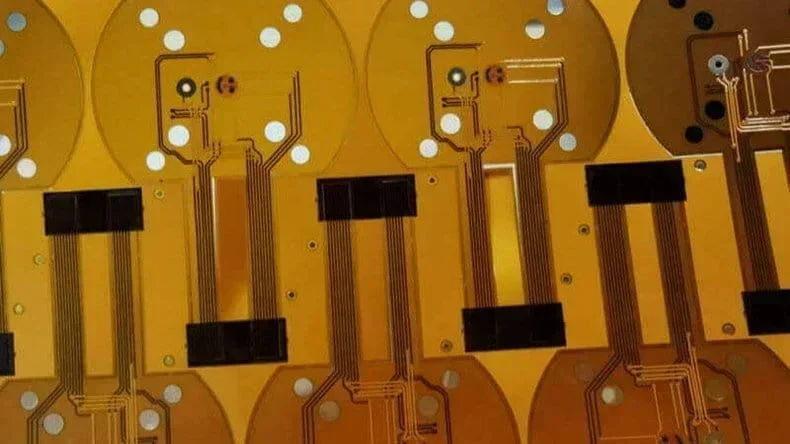
At the flexible PCB manufacturer PCBONLINE, the FPC fabrication is one-stop, including FCCL and flexible PCB.
Flexible PCB manufacturing is a complex process varying for different flexible PCB demands. Here's a general workflow of FPC manufacturing:
Fabricating FCCL > cut laminates > drilling > VCP (vertical continuous plating) electroplating > exposure > etching > drilling positioning holes > electrical test > cleaning and rubbing > alignment and lamination > silkscreen > baking > surface finish > electrical test > profile > visual inspection > sample test > packaging.
You can check the step-by-step flexible PCB manufacturing process with images and video. If you want to see real-time flexible PCB manufacturing at PCBONLINE, you can have an online meeting with PCBONLINE, where we will show the factory monitoring screen.
PCBONLINE provides single/double-sided flex PCB, PI flex PCB of 1 to 10 layers, PET transparent flexible PCB of 1 to 6 layers, and rigid-flex PCB of 2 to 24 layers. And it manufactures the FCCL meeting the fabrication demands of the custom flexible PCBs.
From PCBONLINE, you can have flexible PCBs manufactured and assembled at one-stop at the most reasonable price. If you need flexible PCBs, reach out to PCBONLINE by email at info@pcbonline.com.
Flexible PCB Assembly
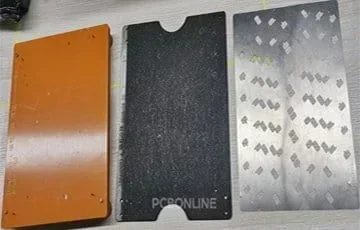
Flexible printed circuit assembly requires a specialized SMT (surface-mount) machine and a custom jig that fixes the flex PCB so that the PCB won't shift during assembly.
The flexible circuit board assembly process includes fixing the FPC by a jig > printing solder paste on the PCB pads > picking and placing components on the flex PCB > reflow soldering > AOI (automatic optical inspection).
Besides flexible PCB assembly, PCBONLINE can further assemble the flexible PCBA to be a module, such as cell contact system (CCS) used for lithium-ion batteries.
PCBONLINE provides complete tests in post-assembly, including tension test, bending test, button strike life test, hand sweat test, environmental protection test, metallographic microscope inspection, fuse test, bridge test, DC resistance test, withstand voltage test, impedance test, and salt spray test.
PCBONLINE provides high-quality flexible PCB assembly. You can have flex PCBs of any type manufactured and assembled at PCBONLINE, including fine-pitch assembly with a minimum SMD footprint of 01005.
Flexible PCB Manufacturing and Assembly Capabilities
Applications of flexible PCB:
medical skins, LED displays, automotive lights, biological research, etc.aerospace, communications, automotive, computing, and medical electronicselectronic devices that require frequent bending, twisting, and stretcheswearable and portable consumer electronics, such as smartphones and laptop
GET A FREE QUOTE
PCB and PCBA Certifications






Contact Our Expert Team Now

Learn about our products


Get customized services



